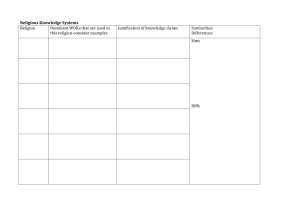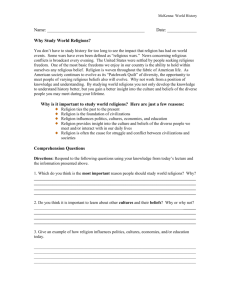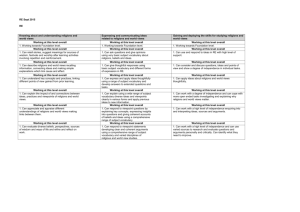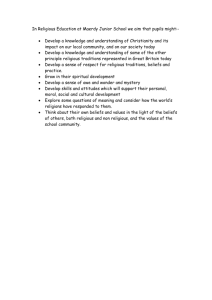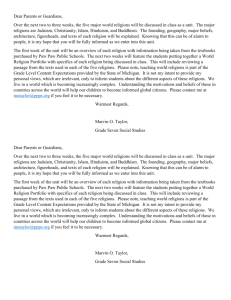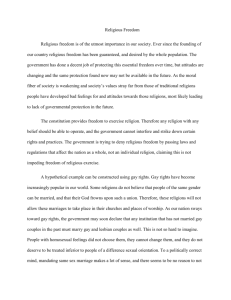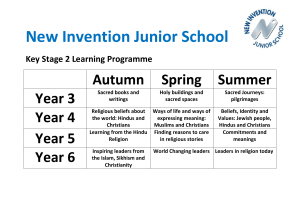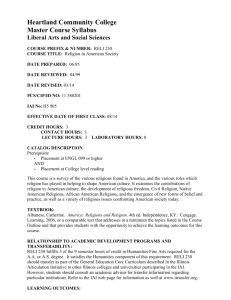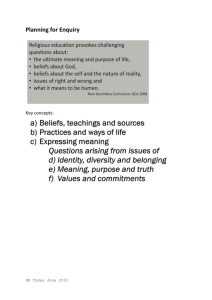Skills Progression for Religious Education Stage One and Two
advertisement
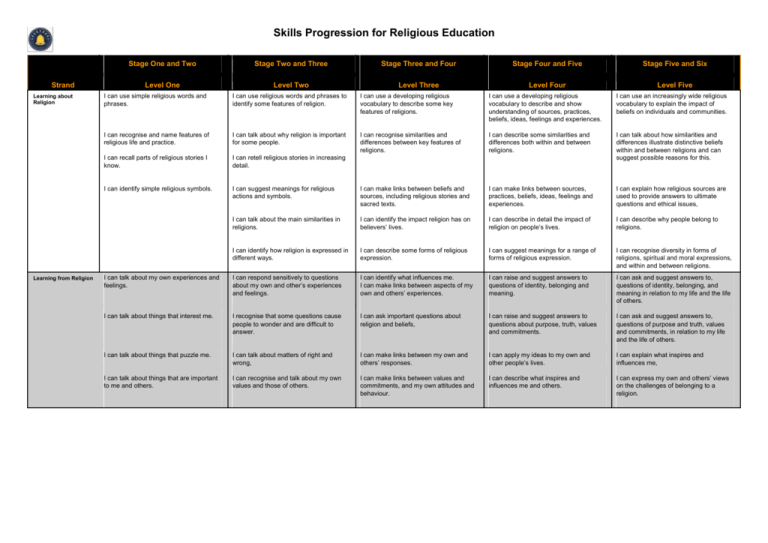
Skills Progression for Religious Education Stage One and Two Strand Learning about Religion Learning from Religion Level One Stage Two and Three Level Two Stage Three and Four Level Three Stage Four and Five Level Four Stage Five and Six Level Five I can use simple religious words and phrases. I can use religious words and phrases to identify some features of religion. I can use a developing religious vocabulary to describe some key features of religions. I can use a developing religious vocabulary to describe and show understanding of sources, practices, beliefs, ideas, feelings and experiences. I can use an increasingly wide religious vocabulary to explain the impact of beliefs on individuals and communities. I can recognise and name features of religious life and practice. I can talk about why religion is important for some people. I can recognise similarities and differences between key features of religions. I can describe some similarities and differences both within and between religions. I can recall parts of religious stories I know. I can retell religious stories in increasing detail. I can talk about how similarities and differences illustrate distinctive beliefs within and between religions and can suggest possible reasons for this. I can identify simple religious symbols. I can suggest meanings for religious actions and symbols. I can make links between beliefs and sources, including religious stories and sacred texts. I can make links between sources, practices, beliefs, ideas, feelings and experiences. I can explain how religious sources are used to provide answers to ultimate questions and ethical issues, I can talk about the main similarities in religions. I can identify the impact religion has on believers’ lives. I can describe in detail the impact of religion on people’s lives. I can describe why people belong to religions. I can identify how religion is expressed in different ways. I can describe some forms of religious expression. I can suggest meanings for a range of forms of religious expression. I can recognise diversity in forms of religions, spiritual and moral expressions, and within and between religions. I can talk about my own experiences and feelings. I can respond sensitively to questions about my own and other’s experiences and feelings. I can identify what influences me. I can make links between aspects of my own and others’ experiences. I can raise and suggest answers to questions of identity, belonging and meaning. I can ask and suggest answers to, questions of identity, belonging, and meaning in relation to my life and the life of others. I can talk about things that interest me. I recognise that some questions cause people to wonder and are difficult to answer. I can ask important questions about religion and beliefs, I can raise and suggest answers to questions about purpose, truth, values and commitments. I can ask and suggest answers to, questions of purpose and truth, values and commitments, in relation to my life and the life of others. I can talk about things that puzzle me. I can talk about matters of right and wrong, I can make links between my own and others’ responses. I can apply my ideas to my own and other people’s lives. I can explain what inspires and influences me, I can talk about things that are important to me and others. I can recognise and talk about my own values and those of others. I can make links between values and commitments, and my own attitudes and behaviour. I can describe what inspires and influences me and others. I can express my own and others’ views on the challenges of belonging to a religion.
